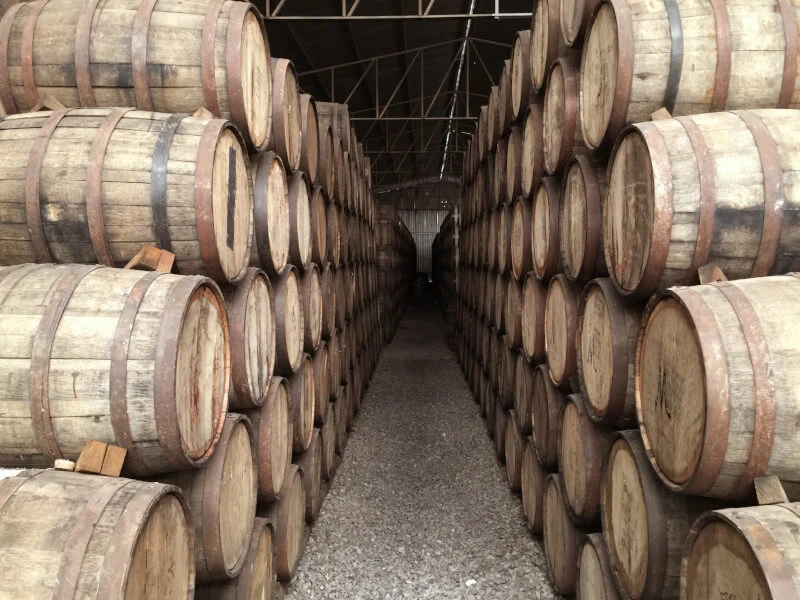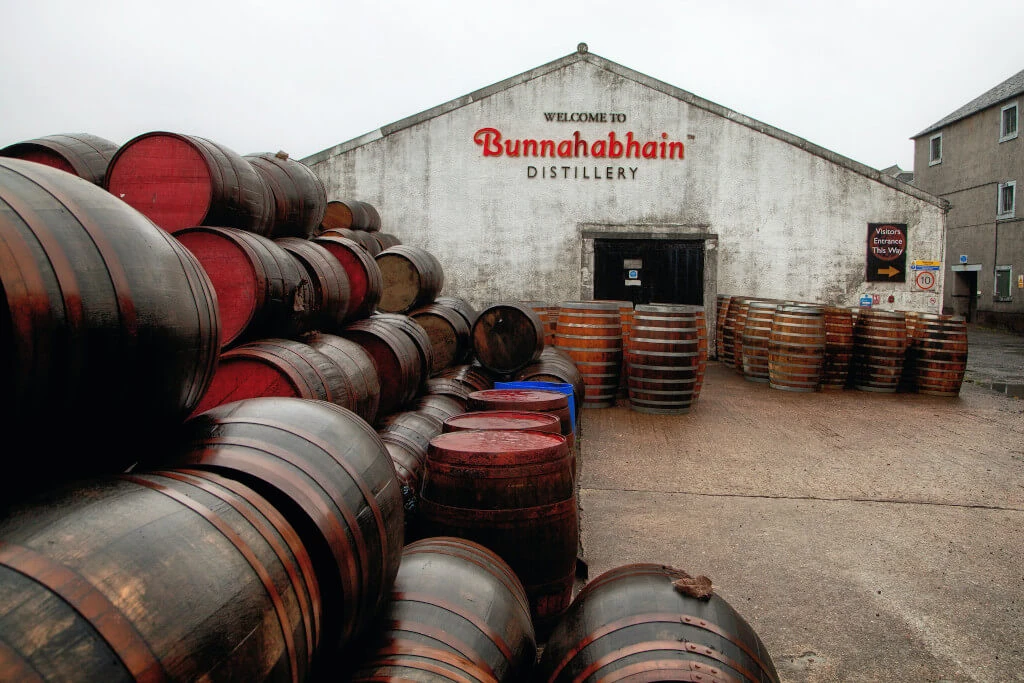Once you immerse yourself in the whisky culture, you’ll learn that oak casks play a crucial role in determining the final flavor profile of your favorite beverage. Sure, the basics are grains, water, and yeast. That crystal-pure liquid is merely a spirit until it spends at least three years aging in an oak cask. The oak barrels are where whisky undergoes its metamorphosis. But not every cask is created equal; a barrel’s complex history significantly influences the flavor of the golden elixir it contains.
Authentic American Flavour
Now, if you’re a fan of American whisky, you’re probably used to the dominant sweetness and vanilla aromas found in beverages like bourbon. The reason for this is that bourbon is required by law in the United States to be matured in charred virgin oak casks. But after the bourbon is gone, what becomes of these barrels? Many people travel to Scotland to start a new chapter in their lives. Up to ninety percent of the whisky barrels in Scotland are said to have been used previously to store American whisky. You can tell a Scotch was aged in a bourbon barrel from the presence of certain flavors like vanilla, butter, and coconut.
The Role of Sherry
On the other hand, if you prefer more robust flavors, your drink of choice was probably aged in a sherry cask. These barrels are traditionally used for aging sherry, Spain’s most famous wine, and are crafted from Spanish oak. Whisky undergoes preconditioning, which can add sugary, fruity, nutty, or salty notes. For example, the sherry cask is responsible for imparting Scotch flavors reminiscent of a warm summer evening, like dried fruit and cigar smoke.
Wine Casks and Their Grape-Laden Influence
You might have noticed, when sipping on certain whiskies, a fruity elegance reminiscent of fine wine. This could very well be the influence of wine casks. For example, Glenmorangie’s Quinta Ruban matured in bourbon barrels but is finished in port wine casks from Portugal. When you indulge in a glass, you might find traces of dark chocolate, oranges, and a finish that hints at sandalwood. Such a profile brings you closer to the terrains of Portugal, without ever leaving your seat.
What Other Barrels Are Used?

Whisky barrels come in a wide variety, although sherry and bourbon are two of the most common. Distillers are notoriously risk-takers, therefore they frequently acquire casks that had held other beverages. These barrels come from all over the world and each one has a distinct flavor profile, from the Port pipes of Portugal to the Cognac barrels of France and the IPA casks of England. For example, the GlenDronach 12-year-old is aged in both American oak and sherry casks for a more complex flavor profile, while the Balvenie DoubleWood begins its maturation in the former. The Springbank twenty-one-year-old? Rhum aged in both bourbon and rum barrels.
Rum Barrels and Their Tropical Punch
Ever wondered why some whiskies surprise you with a sudden burst of tropical fruits? The answer might lie in rum barrels. Rum, with its sugarcane origins, imparts flavors like molasses, tropical fruits, and sometimes even a slight saltiness. The Balvenie produces a 14-year-old Caribbean Cask. This beauty matures in traditional oak whisky casks and gets a finish in barrels that once held Caribbean rum. When you take a sip, prepare to be transported to sandy beaches with a delightful burst of toffee and a hint of fruit, all thanks to the rum influence.
Then there’s Glen Moray, which used cider casks in its experimental process. With just a whiff, you’ll be transported to a crisp autumn day complete with the aroma of apple pies and hayrides.
Madeira Drums
Madeira, a fortified wine from the Madeira islands of Portugal, has a unique nutty and caramel profile. Whiskies aged in Madeira casks often showcase a depth of flavor that can be both fruity and spicy. Take, for instance, the Dalmore King Alexander III. This whisky isn’t just matured but is also finished in Madeira drums. The result? When you take that first sip, expect a medley of flavors ranging from caramelized passion fruit to even a touch of baked bread. It’s like a sudden dance of flavors on your palate, reminding you of the Madeira islands’ rich heritage.
It’s Undeniable that a Cask’s Heritage Affects Your Whisky Flavor
- Whisky’s Liquid Biography: Think of every sip as a chapter from a book, recounting tales of its previous residents. Whether it’s the Glenmorangie Quinta Ruban echoing the terrains of Portugal with its port wine reminiscence, or the Balvenie 14-year-old Caribbean Cask that thrusts forth a burst of tropical fruits, it’s all courtesy of the cask.
- Whisky and Wine, a Match Made in Barrels: Not limited to the sweetness of sherry or the rich robustness of port, wine casks add multiple dimensions. Take a moment to savor the Dalmore King Alexander III, its depth and diversity, derived from Madeira drums, are a testament to the versatility of wine-barrel maturation.
- Global Flavors in Every Drop: It’s not just about Europe or the Caribbean; it’s a global affair. Whisky, matured in varied casks from the US, Portugal, Spain, or even the Caribbean, is a testament to the global influences at play. When you’re sipping on a Scotch that has been cradled by casks from different corners of the world, you’re essentially embarking on a global flavor escapade.
Remember, while the distillation process and ingredients like water, grains, and yeast play their roles, it’s the cask’s background that provides the finishing touch, making each whisky as unique as a fingerprint. To quote Mark Twain, “Too much of anything is bad, but too much good whisky is barely enough.” Now that you understand the intricacies, the next time you pour yourself a dram, you’ll appreciate the silent storyteller – the cask, in a whole new light.
Clarifying Our Love for Oaks
An increasing movement in the whisky industry is to use a variety of casks to create a single bottle. It’s common practice for brands to boast about the variety of barrels they employ during the aging process. However, more is not always better. For example, the Auchentoshan Three Wood is delicious, but so is the Jura Seven Wood, despite the latter’s having one more barrel variety. It’s easy to get lost in the numbers, but remember that in the end, what matters most is your preference.
The idea that one specific cask or wood will produce the best whisky is widely held yet false. The age-old question of whether to drink red or white wine is akin to this situation. Is there a clear winner here? Well, I suppose it all boils down to personal preference and the dinner menu.

